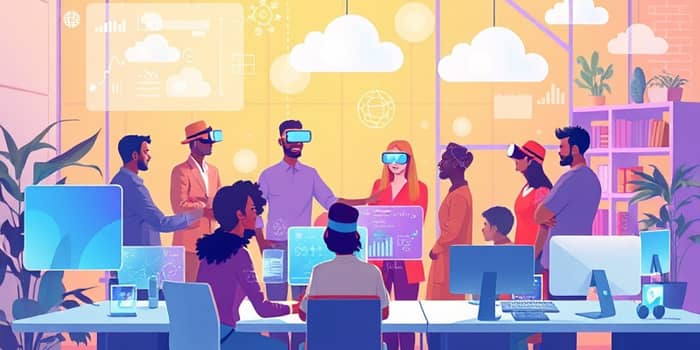
In 2025, the workplace has undergone a dramatic transformation as organizations and employees embrace the solidification of hybrid models as a workplace standard. What began as an emergency response has evolved into a strategic advantage, reshaping how work gets done around the globe.
From Fortune 500 companies to agile startups, leaders now craft policies that balance on-site collaboration with remote flexibility. This balance not only sustains productivity but also fosters innovation, well-being, and deep employee engagement.
The journey to a hybrid workforce has roots in decades of technological advancement. Early remote work experiments laid the groundwork for today’s sophisticated digital environments.
Post-pandemic, companies that resisted rigid return-to-office mandates saw lower attrition and higher morale. As a result, hybrid work has become synonymous with trust, autonomy, and performance.
By the end of 2025, less than 55% of the global workforce will operate from traditional offices. Remote roles surged by 57% year-over-year, while full-time on-site positions dropped by 6%.
These figures underscore a paradigm shift: employees crave flexibility, and businesses that listen gain talent, productivity, and resilience.
Underpinning this new normal is an ecosystem of advanced tools designed to bridge physical and digital divides. From AI-driven cameras to VR training labs, technology fuels seamless collaboration.
Organizations are investing heavily in AI-powered video conferencing with advanced features and inclusive meeting environments that ensure every voice, remote or in-person, carries equal weight.
These innovations not only enhance communication but also streamline workflows, from recruiting and onboarding to performance analytics and payroll processing.
Beyond tools, hybrid work drives profound benefits for individuals and organizations alike. Employees report improved work-life balance, reduced commuting stress, and enhanced mental health.
Companies benefit from digital-first operations and remote experiences that attract diverse talent, lower overhead costs, and boost retention. By embracing flexible policies, businesses become more resilient in the face of disruption.
As technology reshapes roles, certain skills are in skyrocketing demand. Technical literacy, AI fluency, and cybersecurity know-how rank among the top requirements.
Equally critical are soft skills: communication, critical thinking, and creativity. Workers equipped with technological literacy, AI, and big data expertise and creativity, agile thinking, and resilience will lead teams through constant change.
Transitioning to a hybrid model is not without hurdles. Leaders must proactively address gaps in infrastructure, engagement, and talent continuity.
Yet every challenge unlocks an opportunity to innovate. Companies can refine policies, optimize workflows, and cultivate cultures that celebrate flexibility and inclusion.
As we look ahead, emerging technologies like AI-driven coaching, holographic meetings, and deeper VR integrations promise to refine hybrid experiences further. Leaders must adopt a continuous-learning mindset, iterating on policies based on real-world feedback.
Best practices include regular check-ins, transparent communication guidelines, and equitable resource distribution. Investing in employee well-being programs and mental health support ensures sustainable performance.
The future of work is not binary; it is fluid, dynamic, and human-centric. By leveraging cutting-edge tools and fostering a culture of trust, organizations can create a hybrid environment where every team member thrives.
Embrace flexibility, champion innovation, and empower your workforce to write the next chapter in the evolution of work.
References













